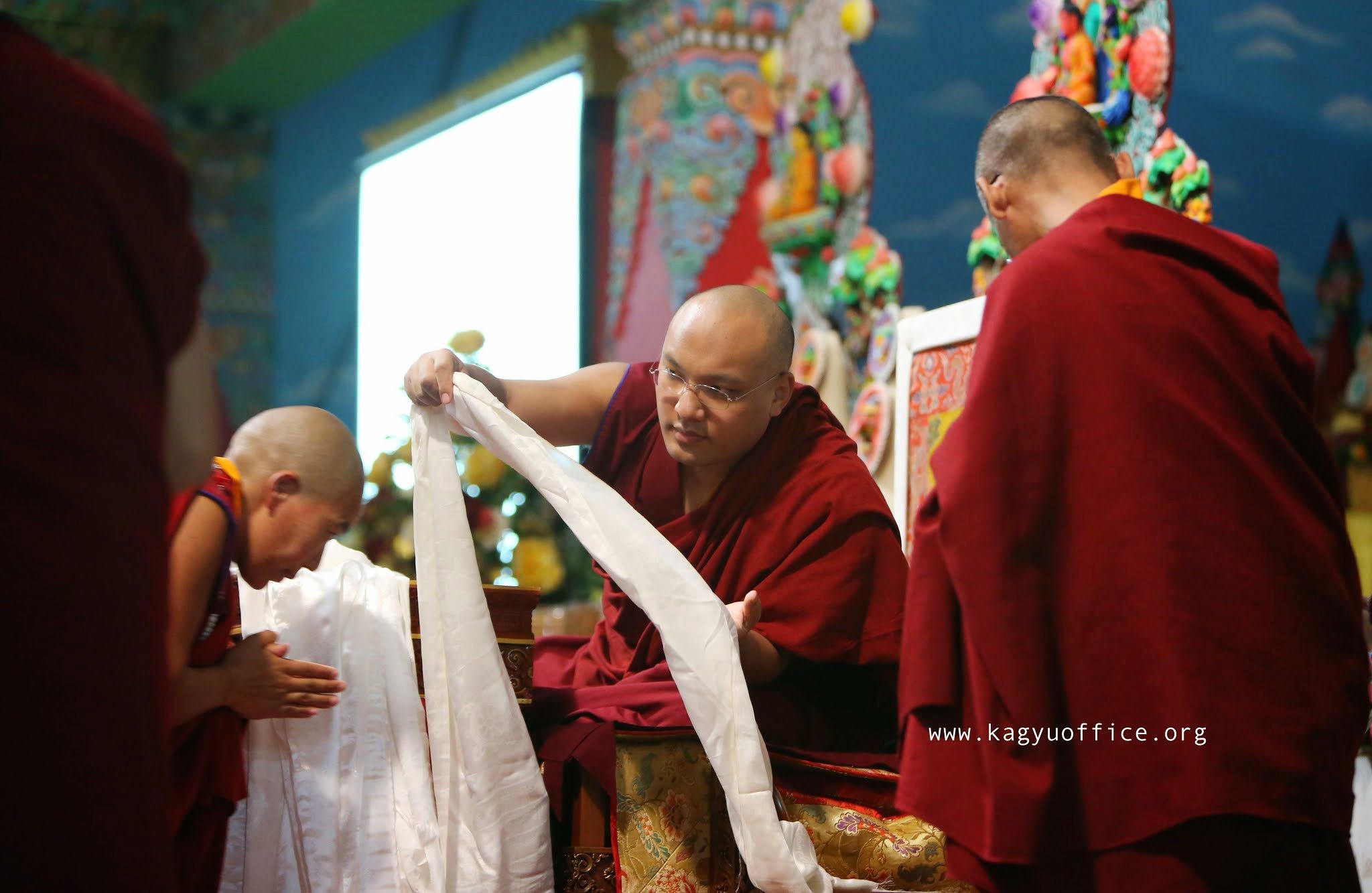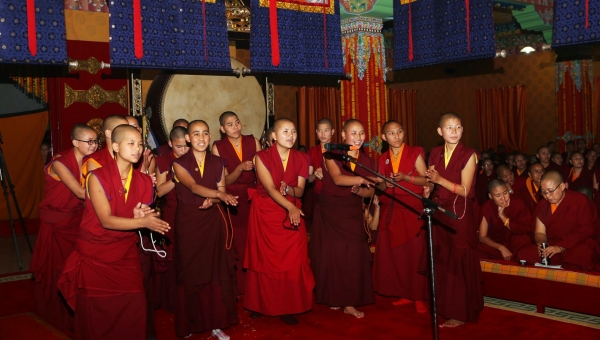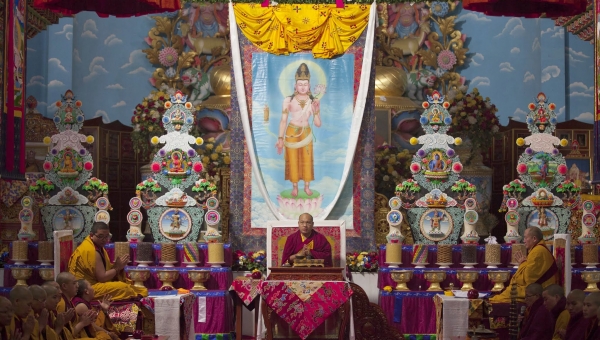After two-and-a-half weeks of daily teachings from the Gyalwang Karmapa, intensive debate training for the participating nuns, and a variety of other dharma activities, the Second Arya Kshema Winter Dharma Gathering successfully concluded.
“We’ve had a long string of dharma activities here in Bodhgaya,” the Gyalwang Karmapa said during the closing ceremony, “starting with the Kagyu monks’ Guncho, the Kagyu Monlam, and now the nuns’ Winter Dharma Gathering. They have all gone very well, and this is because everyone here worked together as one. We can all take joy in this.”
Beginning in the morning, on the final day the Gyalwang Karmapa first led a Tara puja which then continued on through the afternoon. Tara is renowned as having taken a vow to become fully enlightened in a female form. She is particularly supplicated for protection and removal of obstacles, thus making the Tara puja especially appropriate for concluding the nuns’ Winter Dharma Gathering.
The evening’s closing ceremony began with the nuns showcasing their debating skills before the Gyalwang Karmapa. This culminated the intensive daily debate practice during the Winter Dharma Gathering as well as ongoing training throughout the year in their respective nunneries.
Next the Karmapa gave an important speech to the nuns, who were gathered together from nine different nunneries in three countries for the final time this year. He began by explaining his historic plans for restoring nuns’ ordination in the Tibetan tradition, beginning next year.
“The biggest event during next year’s Third Arya Kshema Winter Dharma Gathering will be reinstituting the novice and training vows for nuns within the Tibetan tradition,” he said. “This will be an historical event.”
The Karmapa then outlined his plans to standardise the curriculum in the nuns’ shedras, and announced that he would later hold a week-long meeting at Gyuto Monastery for this process and invite leading scholars to assist.
“In the nunneries it’s important that we have good education and also good health,” he continued. “We consider these both to be extremely important, so we have decided that within the nunneries we’ll sponsor the wages and travel expenses for teachers. Likewise, we’ll try to help the nunneries establish clinics and bring in nuns or doctors who have diplomas and proper certification.”
“This year we also gave leadership training to a few nuns from each nunnery, and likewise we also gave basic health and first aid training to a few nuns from each nunnery. We will continue this training so we can support the nuns in becoming independent.”
“However, in order for all this to happen we need more information about what is happening in each nunnery. So, in order to have better communication we may also need to create a new division for nun’s affairs within the Tsurphu Labrang. This would particularly look after the needs of nuns, and is something I think would be beneficial.”
Next the Gyalwang Karmapa announced some the provisional dates for next year’s activities: the pre-Monlam teachings, to be held just before the 33rd Kagyu Monlam, will begin on 12 February 2016, while the Third Arya Kshema Winter Dharma Gathering is currently scheduled to run from 26 February until 14 March, 2016.
The Gyalwang Karmapa closed the Winter Dharma Gathering by offering his sincere thanks and appreciation to all the many people who had helped to make it happen.
“I’d like to thank all the workers who’ve helped in the Winter Dharma Gathering. Likewise, there are many laypeople from abroad who have come and participated in various ways, whether by making donations or by offering support through your great intentions. This has been very beneficial for the nuns’ gathering and a great help. I’d like to thank you for paying such special attention, and giving special respect, to the nuns.”


























